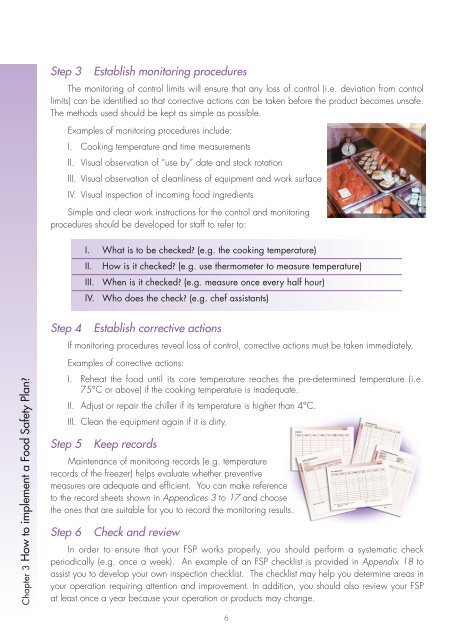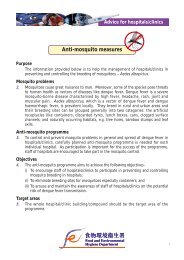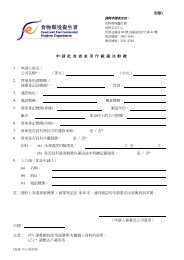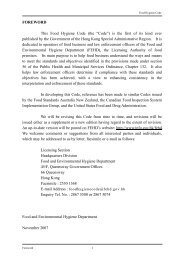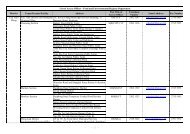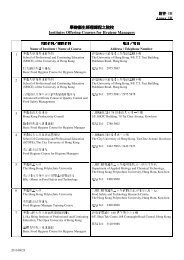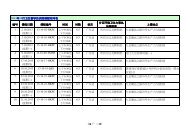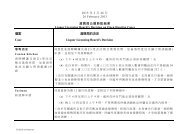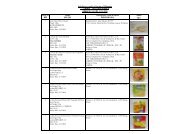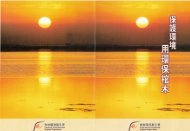Download the whole document (PDF file, 1311 KB)
Download the whole document (PDF file, 1311 KB)
Download the whole document (PDF file, 1311 KB)
Create successful ePaper yourself
Turn your PDF publications into a flip-book with our unique Google optimized e-Paper software.
Chapter 3 How to implement a Food Safety Plan?<br />
Step 3 Establish monitoring procedures<br />
The monitoring of control limits will ensure that any loss of control (i.e. deviation from control<br />
limits) can be identified so that corrective actions can be taken before <strong>the</strong> product becomes unsafe.<br />
The methods used should be kept as simple as possible.<br />
Examples of monitoring procedures include:<br />
I. Cooking temperature and time measurements<br />
II. Visual observation of “use by” date and stock rotation<br />
III. Visual observation of cleanliness of equipment and work surface<br />
IV. Visual inspection of incoming food ingredients<br />
Simple and clear work instructions for <strong>the</strong> control and monitoring<br />
procedures should be developed for staff to refer to:<br />
I. What is to be checked? (e.g. <strong>the</strong> cooking temperature)<br />
II. How is it checked? (e.g. use <strong>the</strong>rmometer to measure temperature)<br />
III. When is it checked? (e.g. measure once every half hour)<br />
IV. Who does <strong>the</strong> check? (e.g. chef assistants)<br />
Step 4 Establish corrective actions<br />
If monitoring procedures reveal loss of control, corrective actions must be taken immediately.<br />
Examples of corrective actions:<br />
I. Reheat <strong>the</strong> food until its core temperature reaches <strong>the</strong> pre-determined temperature (i.e.<br />
75°C or above) if <strong>the</strong> cooking temperature is inadequate.<br />
II. Adjust or repair <strong>the</strong> chiller if its temperature is higher than 4°C.<br />
III. Clean <strong>the</strong> equipment again if it is dirty.<br />
Step 5 Keep records<br />
Maintenance of monitoring records (e.g. temperature<br />
records of <strong>the</strong> freezer) helps evaluate whe<strong>the</strong>r preventive<br />
measures are adequate and efficient. You can make reference<br />
to <strong>the</strong> record sheets shown in Appendices 3 to 17 and choose<br />
<strong>the</strong> ones that are suitable for you to record <strong>the</strong> monitoring results.<br />
Step 6 Check and review<br />
In order to ensure that your FSP works properly, you should perform a systematic check<br />
periodically (e.g. once a week). An example of an FSP checklist is provided in Appendix 18 to<br />
assist you to develop your own inspection checklist. The checklist may help you determine areas in<br />
your operation requiring attention and improvement. In addition, you should also review your FSP<br />
at least once a year because your operation or products may change.<br />
6


